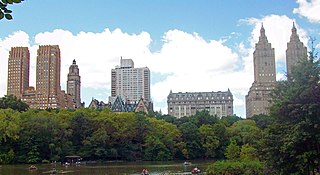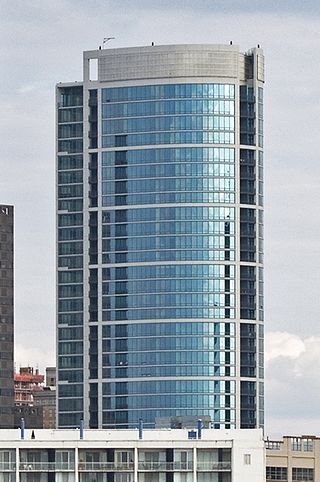Analyzing the multi-family property
(This section discusses conversions primarily from a marketing or realtor's perspective.)
The market for residential condominium conversions typically arises when the price of single family homes increases beyond the reach of the first time buyer. There are multiple types of investors involved when there is a hot conversion market. For example, an experienced developer may purchase an apartment building, hire a consultant to put the entitlements in place, and then upgrade the building so that the sales team can sell them as individual condominiums. Alternatively, a mom and pop have owned a 20 unit apartment building for 20 years and want to sell it. Rather than selling it outright as an apartment building, they hire a consultant to process the entitlements and sell the building instead at a condo premium to a developer who finishes the job.
In order to determine the sales potential of the converted units, a market analysis is needed. This part of the process involves conducting a study of the neighborhood and of any competing complexes: an inspection of the exterior of the buildings, the condition of the interiors of the units, the condition of the grounds and the amenity package in place.
Planning the conversion
(This section discusses conversions primarily from a marketing or realtor's perspective.)
Using the study outlined above, a conversion plan is formulated, taking into consideration both the positive and negative aspects of the property. The plan includes budgeting for needed rehab activities and the addition of any amenities that may be lacking.
Homeowners Association (HOA)
A condo community is governed by a form of homeowners association which, in some jurisdictions, such as Ontario, Canada, is actually a condominium corporation that is managed by a board of directors. The association, of which all of the condo unit owners are members, sets out certain guidelines relative to the obligations of the unit owners as they relate to the ownership of their unit and to their participation within the condo community, subject to the restrictions, guidelines and procedures set out in the applicable statutory regime. The operation of the association or corporation is very important to the success of the condo conversion (after conversion, property maintenance and, ultimately, the enhancement of property values.
Marketing and financing
The marketing of the condos can be done either through a realtor or with in-house personnel. (As outlined above, a model unit should be used in the program.) Direct mail campaigns--mailing brochures into apartment complexes--are often very successful. Television spots on cable channels can be very productive as well. Another powerful marketing tool, one that should be taken into consideration going into the conversion, is an attractive financing package that can be made available to potential purchasers of the condos.

An apartment, flat, or unit is a self-contained housing unit that occupies part of a building, generally on a single storey. There are many names for these overall buildings. The housing tenure of apartments also varies considerably, from large-scale public housing, to owner occupancy within what is legally a condominium, to tenants renting from a private landlord.

A townhouse, townhome, town house, or town home, is a type of terraced housing. A modern townhouse is often one with a small footprint on multiple floors. In a different British usage, the term originally referred to any type of city residence of someone whose main or largest residence was a country house.

A condominium is an ownership regime in which a building is divided into multiple units that are either each separately owned, or owned in common with exclusive rights of occupation by individual owners. These individual units are surrounded by common areas that are jointly owned and managed by the owners of the units. The term can be applied to the building or complex itself, and is sometimes applied to individual units. The term "condominium" is mostly used in the US and Canada, but similar arrangements are used in many other countries under different names.

A housing cooperative, or housing co-op, is a legal entity, usually a cooperative or a corporation, which owns real estate, consisting of one or more residential buildings; it is one type of housing tenure. Typically housing cooperatives are owned by shareholders but in some cases they can be owned by a non-profit organization. They are a distinctive form of home ownership that have many characteristics that differ from other residential arrangements such as single family home ownership, condominiums and renting.
Property management is the operation, control, maintenance, and oversight of real estate and physical property. This can include residential, commercial, and land real estate. Management indicates the need for real estate to be cared for and monitored, with accountability for and attention to its useful life and condition. This is much akin to the role of management in any business.

A condo hotel, also known as a condotel, hotel condo, or a contel, is a building that is legally a condominium but operated as a hotel, offering short-term rentals, and which maintains a front desk.

The St. James is a luxury residential skyscraper in Washington Square West, Philadelphia, Pennsylvania, United States. The 498 feet (152 m), 45-story high-rise stands along Walnut Street and Washington Square and is the 15th tallest building in Philadelphia.

The Murano is a residential skyscraper in Center City Philadelphia. Part of a condominium boom occurring in the city, the Murano was announced in 2005 and was developed jointly by Thomas Properties Group and P&A Associates. The building, named after Murano, Italy, was completed in 2008 at a cost of US$165 million. The site, previously occupied by a parking lot, was the location of the Erlanger Theatre from 1927 to 1978.

Park Plaza Condominiums is a residential high-rise building in Albuquerque, New Mexico. At 160 feet (49 m) in height it is the 15th-tallest building in the city, as well as the tallest residential building in New Mexico. The 14-story tower originally consisted of rental units but was converted to condominiums in 1979. It is located one block south of Central Avenue, just west of Downtown.

The Apthorp is a condominium building at 2201–2219 Broadway on the Upper West Side of Manhattan in New York City, United States. The 12-story structure was designed by Clinton & Russell in the Italian Renaissance Revival style and occupies the full block between Broadway, West End Avenue, and West 78th and 79th Streets. It was built between 1905 and 1908 as a residential hotel by William Waldorf Astor, who named it after the Apthorp Farm, of which the site used to be part. The Apthorp is a New York City designated landmark and is listed on the National Register of Historic Places.
René G. Lépine was a Canadian real estate developer and philanthropist. Lépine was the chairman of Groupe Lépine, a real estate development and investment firm he founded in 1953. He is widely considered one of the most influential French Canadian real estate developers of his time. His companies developed over $5 billion of real estate in Canada and the United States since the 1960s. He also owned a portfolio of multifamily and retail properties in Montreal and Ottawa. Lépine developed many buildings considered landmarks in Montreal, including the Olympic Village and Le Sanctuaire du Mont-Royal. Lépine is also credited with having developed the first condominiums in Montreal in 1981.

1049 Fifth Avenue is a 23-floor luxury condominium apartment building located in the Upper East Side, New York City. Built in 1928 as the Adams Hotel, the building underwent extensive renovation in its conversion to residential condominiums during the years 1990-1993. When the apartments were first offered for sale in 1991, they were the highest-priced residential apartments ever listed in New York City. Their sale prices set city records in 1993 and 1994.

NEMA, also known as Tenth and Market, is a 754-unit luxury residential apartment complex in the Mid-Market neighborhood of San Francisco, California, United States, across the street from Twitter's corporate headquarters. The complex consists of a 24-story, tower at Jessie and Tenth Streets and a 37-story, tower at Market and Tenth Streets, connected by a nine-story podium along Tenth Street.

Real estate is property consisting of land and the buildings on it, along with its natural resources such as growing crops, minerals or water, and wild animals; immovable property of this nature; an interest vested in this (also) an item of real property, buildings or housing in general. In terms of law, real relates to land property and is different from personal property while estate means the "interest" a person has in that land property.

One in eight Canadian households lived in a residential condominium dwellings, mostly located in a few census metropolitan areas according to Statistics Canada Condominiums exist throughout Canada, although condominiums are most frequently found in the larger cities. "Condominium" is a legal term used in most provinces of Canada. in British Columbia, it is referred to as "strata title" and in Quebec, the term "divided co-property" is used, although the colloquial name remains "condominium".
The Ivana Las Vegas was a proposed 73-floor, 923-foot condominium high-rise, named after Ivana Trump. The project was initially announced in August 2004, as The Summit, and was to be constructed on the 2.17-acre site of the closed Holy Cow Casino and Brewery, located on the Las Vegas Strip in Las Vegas, Nevada. Trump became involved with the project in June 2005, when it was renamed.
Las Vegas Grand is an apartment complex located east of the Las Vegas Strip in Paradise, Nevada. It was developed by Chris DelGuidice through his Florida-based company, Del American. Originally, DelGuidice planned to build apartments on the site around 2001, and he subsequently added a condominium component. The project was announced in August 2003, but the apartment aspect was removed from the project later that year because of rising construction costs. The project, to be known as Vegas Grand, was to consist of 880 condominium units.

The Platinum is a 17-story, 255-unit condo hotel located at 211 East Flamingo Road in Paradise, Nevada, east of the Las Vegas Strip. The project was approved in 2003, and began construction in 2005, as a joint venture between Diversified Real Estate Concepts, Inc. and Marcus Hotels and Resorts. The project was topped out in December 2005, and was opened in October 2006. In 2009, buyers filed lawsuits against Marcus for various allegations; the last of the lawsuits were settled in March 2013.

The Westerly, also known as the 24th Place Condominiums, is a 14-floor high-rise building in Northwest Portland, Oregon, in the United States. It is located at 2351 NW Westover Road in Hillside neighbourhood. Construction of the building began in 2006, and was completed in 2008.













